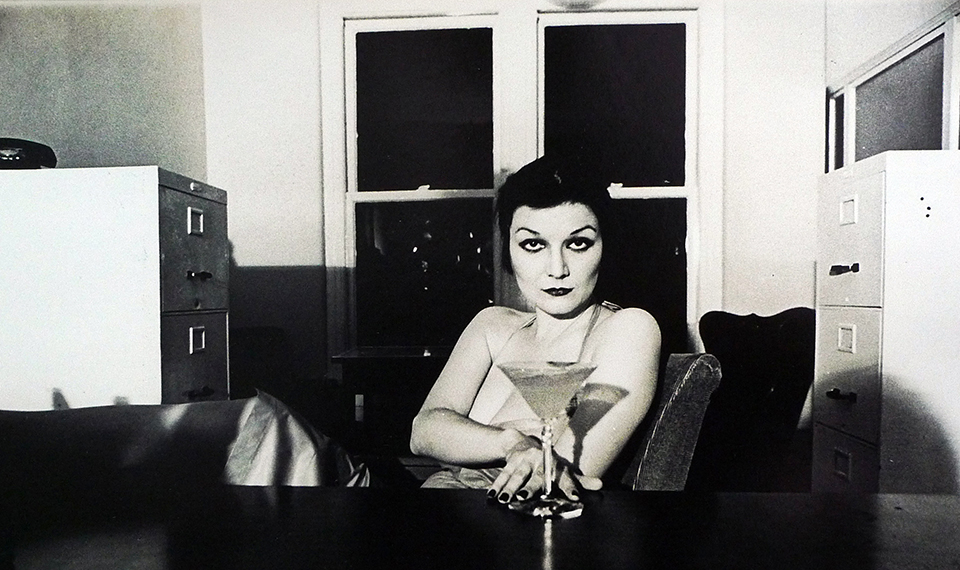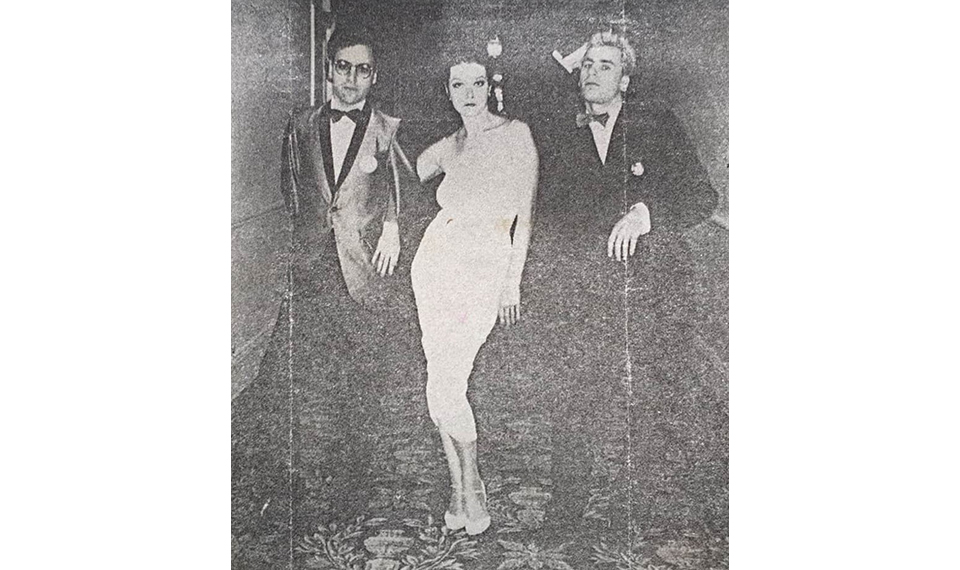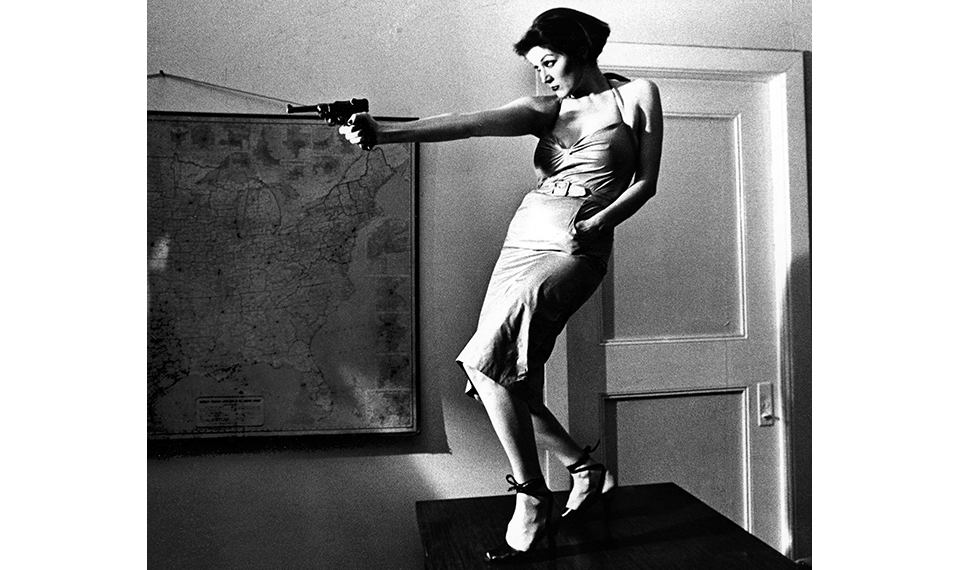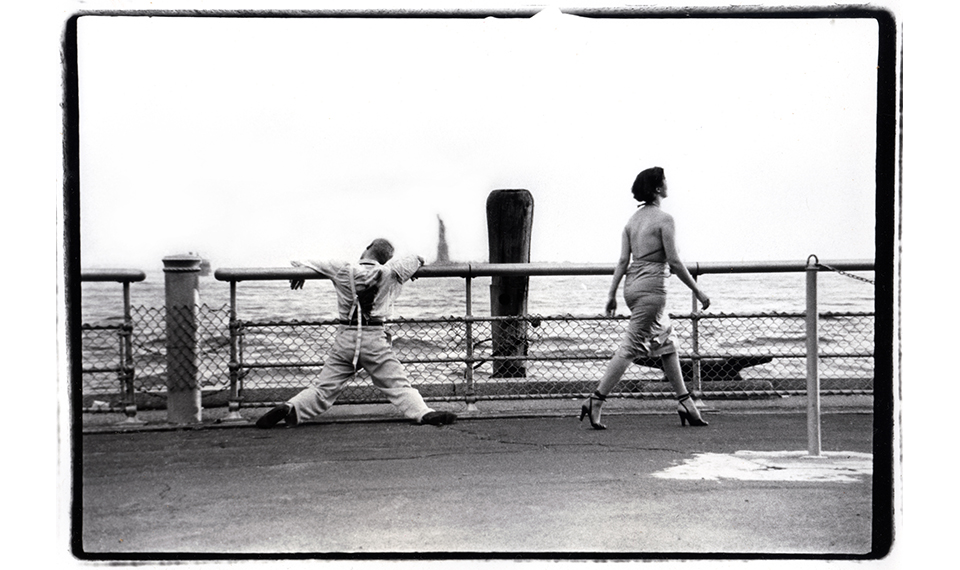Patti Astor was FUN
Richard Boch talks to Eric Mitchell, Kenny Scharf, Jane Dickson, Amos Poe and Charlie Ahearn.
People tend to throw words around—words like star, legend, genius and fabulous, maybe even edgy and avant-garde. When I think of Patti Astor or when I close my eyes and see her moving through a crowd or working a room, I can easily toss around those words. Patti was all of them, and so much more.
Patricia Titchener was born in Cincinnati. She left Ohio in 1968 to attend Barnard College until she dropped out and joined the SDS in protest of the Vietnam War—but it was 1975 when Patti Astor truly arrived in New York City. She took some classes at Lee Strasberg with her friend, the French actor-writer-director Eric Mitchell, and together they dove headfirst into the low-budget, freewheeling, 16mm world of filmmaker Amos Poe. It was Downtown NYC—the early days of CBGB heading into the wild-time late-Seventies and early-Eighties of the Mudd Club with a soon-to-explode East Village art scene. Astor was the platinum-blonde force of nature, who was ready to take on all of it.
Unmade Beds, Poe’s beautifully twisted, 1976 neo-noir take on Godard’s Breathless was the stepping stone for what followed. Working alongside Mitchell, Duncan Hannah and Debbie Harry, Astor was preparing for the many career close-ups that would follow. Poe’s 1978 film The Foreigner saw Patti turn heads and break loose as detective Philly Harlowe, but it was Mitchell’s third directorial effort, Underground USA, that made her a star. Appearing alongside the Warhol troublemakers Taylor Mead and Rene Ricard, with Mitchell casting himself as a sexy-dirty gigolo-hustler, it was a No Wave spin on Sunset Boulevard, featuring the decay and debauchery of the Lower East Side. Astor played the lonely movie star that Hollywood left behind—and by then, Patti was more than ready for her close-up.
Next up was Wild Style, Charlie Ahearn’s 1982 film that was in its own way, everyone’s real introduction to the culture of Graffiti, Rap and Hip-hop. Astor was cast as a roving reporter covering the scene that was happening in the Bronx and the way-uptown reaches of Manhattan. Now regarded as both a classic and a pivotal moment for Graffiti’s elevation to fine art, Wild Style marked a turning point for Patti. She fell in love with the scene and was ready to make her next move.
Patti Astor together with business partner Bill Stelling opened FUN Gallery in 1981. Squeezed into a narrow East 11th Street storefront, FUN was the first of the new galleries that kicked off the East Village Art Scene of the 1980s. Showcasing the diverse talents of artists Kenny Scharf and Keith Haring, Fab 5 Freddy, Jane Dickson and Jean-Michel Basquiat, FUN Gallery created a defining moment in the art world. The FUN stable of Graffiti writers and artists also included Krylon luminaries Dondi, Lee Quinones and Futura 2000 among others.
I reached out to Eric Mitchell, Amos Poe, Kenny Scharf, Jane Dickson and Charlie Ahearn, asking each of them to share a moment or memory that speaks to why Patti Astor was a star, a legend and so much more.
Here’s what they had to say.

Patti Astor in Amos Poe’s The Foreigner, 1978. Photo Fernando Natalici.
Eric, I thought of you when I heard the news about Patti. Memories of the Underground USA shoot, especially that wild and strangely erotic dance floor scene made me smile and feel a sense of loss at the same time. Tell me what working together as both actor and director was like—and how your deep and lasting friendship was part of that chemistry.
Eric Mitchell: Patti Astor was one of a kind. I met Patti in San Francisco in 1973 when she took me in as a roommate in her Pacific Heights Victorian flat. She was a uniquely styled woman, eons away from the common “Post-Haigh Ashbury” garb worn in SF at the time. Her prior roommate had been the North Beach purveyor of Victorian dresses and artifacts to the San Francisco scene including Janis Joplin and Grace Slick. Patti’s house was all stained glass windows and filled with beaded dresses from the 1920s along with thousands of Victorian shoes. To learn filmmaking, we made costumed Super 8 films.
Patti started wearing 1940s outfits and two-tone pumps and struck quite a pose. We were both drop-outs, me from Paris and Patti from Barnard College, 1968. She’d been arrested in New York and I’d been arrested in Paris and at the time she was performing in “a street tap-dancing act,” with her Marcel Marceau-trained British boyfriend friend. Our days were consumed by taking drugs, listening to great music and going to see amazing underground movies at the Pacific Film Archives—the Kuchar Brothers in the afternoon and Pink Flamingos at midnight. In 1975 I connected with Patti in New York, where we both enrolled at the Lee Strasberg Institute to become “actors.” She was fearless and bold when working on films with Amos Poe and myself as well as appearing in Tina L’Hotsky’s Snake Woman, and Anders Graftstrom’s The Long Island Four.
Directing Patti in Underground USA was a joy for me and a very challenging project, as no one had any money. It was Patti and Rene Ricard’s film and they worked well together and bonded to achieve the tone and the emotions of the story. Tom Dicillo’s cinematography and Jed Garet’s set design completed the film’s chemistry. In 1980 the film ran at midnight for six months at the Saint Marks Theater on Second Avenue before being broadcast on PBS Channel 13. The next year Patti met Fred Brathwaite and Keith Haring on Astor Place and together with Bill Stelling she opened the FUN Gallery. The rest is history.

News Clipping, Deauville, France, 1977. Poe, Astor and Mitchell.
Hi Amos. We’ve talked about your films before, but now with the news about Patti, we’re left with a somewhat different or added perspective when it comes to Unmade Beds and The Foreigner. There’s also that wild trip that you, Eric and Patti made to the 1977 Deauville Film Festival leaving you with some beautiful memories. Tell me more.
Amos Poe: So, yeah, Patti—I can’t think of her without her voice ringing in my ear like angry chalk on a blackboard. That was in the spring of 1976 when Eric Mitchell brought her to my office near Columbus Circle when I was casting for my first feature film, Unmade Beds. I liked Patti from the get-go, she was so there—a movie star in the tradition of Russ Myers, Jack Smith or John Waters. Those big eyes, her wild voluptuousness and that voice. I watched her, I listened and I thought, it’s a perfect movie voice, so high pitched, dogs twenty miles away would come running—and I wanted some dogs in my audience.
We gave her a cool comedic role, as model Jeanne Moreau, in Unmade Beds—then a larger noirish role, as detective Philly Harlow in The Foreigner a year later. She was crazy in love with acting, a gloriously Punk and destitute Anita Ekberg. She never questioned any of my ridiculous directions; she just screamed, “Oh my God, you’re more Godard than Godard!” Patti was flawed in a wonderful way, like a chipped diamond, flashes of light gleaming from the cracked facets of her soul.
Then in early September 1977, Eric, Patti and I attended the Deauville Film Festival, premiering Unmade Beds. On our opening night, Patti wore a tight, white, low-cut see-through dress. The paparazzi went wild for her, and she for them. It was like our own private Cannes; a Cannes without the red carpet but instead a carpet of greater expectations.
Patti was a star but she pined, “I’m a Downtown diva but I’m broke!” She opened the FUN Gallery—thought she’d become wealthier—and her wild ambition drove her forward. When FUN closed, she moved out west, to California. She longed to manifest her destiny. She thought she might revive her acting career but in the back of her mind, she knew her salad days were behind her.
Alas, she was still Patti and in one of our last phone conversations, about a year ago, she sadly crooned, “We shoulda been rich, Amos, we had it all…” There was a pause I could not fill because I heard her wheels turning and then she added, “… maybe that’s the whole point of livin’, when you have it all, it’s better to give it away. We may be poor, but we’re rich.”

FUN Gallery Crew, 1981 Futura 2000, Mike Kelley, Patti Astor, Jane Dickson and Fab 5 Freddy. Photo Courtesy of Jane Dickson.
Hello Jane. I remembered your work being shown at FUN Gallery and thought it would be great to hear from you about being part of that somewhat male-dominated stable of artists—besides that, some of your work speaks to New York City during those crazy days. What was your initial connection to Patti and the East Village Art Scene, and how did being part of FUN impact your early career as an artist?
Jane Dickson: Patti Astor was a comet streaking across the downtown scene in the late 1970s through the 1980s. I had seen her around at many events at the Mudd Club and elsewhere but we officially met in 1980 at our loft in Times Square. Charlie Ahearn, my future husband was casting Patti as the intrepid reporter in Wild Style, the first movie about Graffiti and Hip Hop. Fab 5 Freddy and I were producers on the film and Charlie knew Patti from high school family vacations.
We were meeting with some of the cast—Fab, Lee, maybe Dondi and Futura. Patti had already become totally immersed in the Indy film scene and I could see her becoming electrified by the vistas these new street artists were opening up for her. She declared on the spot, “I want to open a gallery and show all your work!” She did, combining her political and aesthetic passions as she changed the art world forever.
Patti and her gallery partner, the lovely Bill Stelling were never in it for the money. FUN was a calling and a non-stop party. They showed a mix of East Village party boys, the best new street artists and me, the only woman.
In May 1981 for my solo exhibition of Times Square drawings on black paper, Patti focused on what color the walls should be (I chose mint green) and which cocktail would match the walls (something with creme de menthe?) This show launched me, but Patti was focused on her boys and she questioned whether I really needed her to pay me for the work she sold (I really did need to be paid!) when others might need the money more. When Jean-Michel Basquiat and Keith Haring left FUN and moved on to other galleries I asked if she didn’t want to try to keep working with them and their new dealers. “Oh no,” she said, “I’m just so happy for them.”
Patti was also a wonderful writer. If you haven’t read her autobiography, FUN GALLERY… THE TRUE STORY, you’re in for a treat.

Patti Astor in Amos Poe’s The Foreigner, 1978. Photo Fernando Natalici.
Hi Kenny. It certainly came as a shock hearing about Patti. She was someone I always loved running into, though as a friend you’ve certainly had more contact with her over these last years—or even decades. When you think back to the early days of FUN Gallery, how much of a force was Patti when it came to moving the scene forward, and most importantly, into the now?
Kenny Scharf: Hi Richard, I unfortunately was sad but not surprised to hear the news about Patti. It’s hard to watch friends struggle and I know she’s been struggling for a while. About two or three years ago I saw her and she looked super good and I asked her what was up. I was very happy to see that she definitely looked healthier. When I saw her again about a year ago, it worried me very much.
Patti was a force to be reckoned with and understood the exclusionary aspect the art world has and had even more so at the time. I think she saw all the hypocrisy and like a good Punk rock panther-girl she changed the rules of the game—Patti was definitely a catalyst for that change through FUN Gallery. So much happened because of FUN Gallery and all the people that intermingled—the clash and the celebration of the Punk and New Wave Downtown with the Hip-hop, Graffiti Uptown—it created a supercharged level of excitement thanks to Patti. Her role in Wild Style really exemplifies this—and she took that into the real world and brought everything together at FUN.

Patti in Harlem, Sugarhill Rap Convention, 1981. Photo Charlie Ahearn.
Hi Charlie. Would love to hear your memories of casting Patti in Wild Style, which in a big way seemed like she was playing yet another version of herself. Besides that, please tell us something about how Patti, by being herself, very much opened the downtown doors to that whole other uptown, Graffiti, Rap and Hip-hop world.
Charlie Ahearn: There was a massive Sugarhill Rapper’s Convention at the Harlem Armory in early 1981—headlining were Grandmaster Flash and The Furious Five, The Funky Four and The Fantastic 5 MCs—and I was there checking out all the talent we were hoping to have in our movie Wild Style. Ten thousand kids in one vast open space in the biggest Hip-hop event ever and I run into my friend Patti Astor dressed in her silver jumpsuit like she was the star of the show. I snapped this shot, which to me guaranteed her character would be in the movie. As the intense energy was building for Flash, what sounded like a pistol shot or a speaker blowing sent the entire room into a paroxysm, a screaming stampeding mass and I innocently tried to snap some of this Hip-hop chaos. Patti was nowhere in sight, so I joined the river of those looking for the exit doors and found Patti outside. She was excited by the rush, but also eager to chill out at a nearby bar to discuss her role in the movie we were now making together with Flash, Fab 5 Freddy, Lee and Lady Pink.

Eric Mitchell and Patti Astor, Final Scene from Amos Poe’s The Foreigner, 1978. Photo Fernando Natalici.
***
Patti Astor died April 9, 2024
RIP
INTERVIEW Richard Boch
PHOTOGRAPHY Courtesy of the artists
Richard Boch writes GrandLife’s New York Stories column and is the author of The Mudd Club, a memoir recounting his time as doorman at the legendary New York nightspot, which doubled as a clubhouse for the likes of Jean-Michel Basquiat, Keith Haring, Debbie Harry and Talking Heads among others. To hear about Richard’s favorite New York spots for art, books, drinks, and more, read his Locals interview—here.